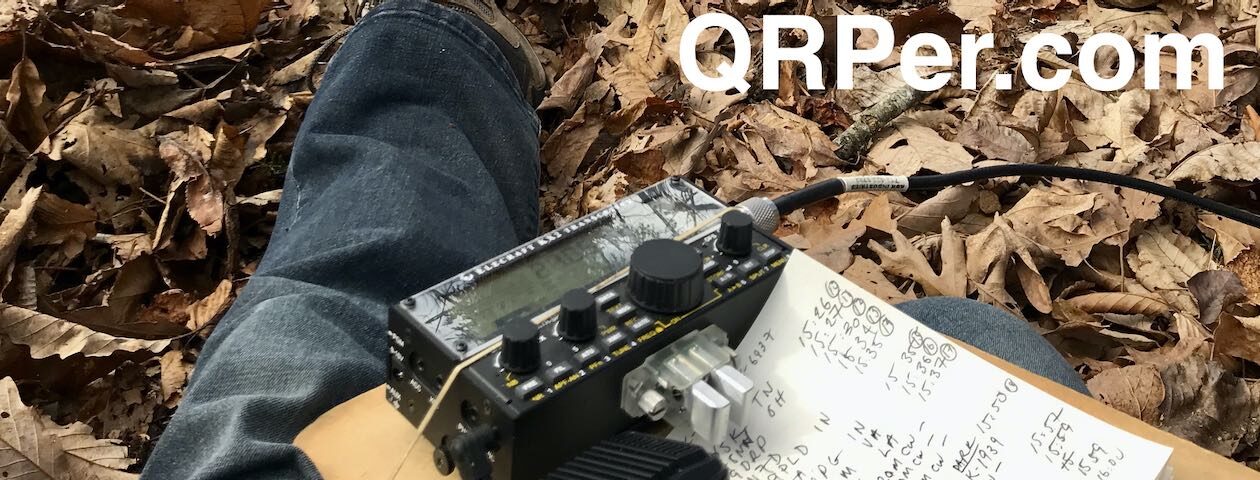 Three Years of the QRPer Discussion Board
Three Years of the QRPer Discussion Board
by QRPer.net Admin
Purpose
Many of us who regularly visit the QRPer.com Web Log really enjoy the content created and curated here by Thomas Witherspoon, K4SWL. His unassuming style, broad knowledge, and humility have encouraged trust and loyalty among his followers. Many of us openly defy the YouTube algorithm to follow his real time, real life, activation videos. We have come to rely on the knowledge he shares in his thorough and comprehensive reviews of new equipment. We also value his thoughtful and encouraging response to our burning questions. In short, Thomas’s followers can happily consume as much time as he is willing to devote to meeting our needs, and we have him greatly outnumbered!
The QRPer.net Discussion Board was conceived as a means to ease Thomas’s burden by empowering the QRPer community to crowd-source answers to detailed questions, to provide a forum for discussion among QRP and Field Operating enthusiasts, and to educate and encourage newer operators. Selfishly, it was hoped that this community involvement would enable Thomas to use his limited time to create more of the unique content that we all crave.
Three years ago, this free resource came into being. Not only did it serve the desired purpose, but it also built a library of information gained through discussion, answers to questions, sharing opinions, and generally fostering enthusiasm and shared passion among the community. Oh, and as a bonus, existing posts on the QRPer Discussion Board are searchable, making it fast and easy to find posted comments that match your question or your interest!
Growing Pains
To date there are over 800 members, some of whom have contributed to the almost 1400 posted comments related to QRP and field operation. A group of volunteers moderates posted content (active moderation is rarely required, because Thomas’s followers are a well-mannered and courteous group). Until mid-2024, setting up an account was simple and easy, but then our community was discovered and targeted by spammers.
We have tried a number of methods to keep spammers out, because spam accounts started posting off-topic, and objectionable content. First we applied the hosting software’s automated anti-spambot countermeasures, basically a maze that a new user needed to navigate before creating an account. This worked to a point, but spambots quickly found a path through the maze to create hundreds of new accounts per week. So, now we require a correct answer to a QRP- or Amateur Radio-related question, changing the questions as the spambots catch on. We also manually validate each new account before the owner is allowed to post to the Discussion Board. This validation relies on 2-factors for authentication.
Validating New Accounts
Preferably account creators are validated because they also sent an email containing their account username, the email address that they used to create the account, and their amateur radio callsign (or “Short Wave Listener” if not licensed) to qrpernet@gmail.com. When such an email is received for a newly created account, that account is activated for use. This email requirement is only advertised on the QRPer.com Web Log, and spambots have not yet discovered this connection.
Often new accounts arrive without an email. When this happens, your humble Admin looks at the username and email address for the new account. If an amateur callsign can be discovered in either, it is manually looked up on QRZ.com. When the email address of record on QRZ.com matches the email associated with the new account, the account is considered valid and it is activated. When the QRZ.com page reports a different email address, it really slows down the process. When time permits, an “Admin Email” from qrpernet@gmail.com may be sent to the QRZ email address of record, asking whether the licensee created the new account. Frequently this does not elicit a response, likely because the Admin Email itself is deleted as spam.
Many times the licensee’s QRZ page does not report an email address, so validated communication is not possible. These accounts are kept on the pending accounts list for a few weeks awaiting a confirmation email, but are then deleted when the pending accounts list grows to the point of becoming unmanageable.
Admin Email is not sent to the (unconfirmed) email addresses associated with new accounts, because that could be further exploited by the spammers. Finally, accounts are not activated just based on their reference to a valid Amateur Radio callsign, because it is too easy to pirate callsign information and pair it with a bogus email address.
If you have had difficulty getting an account activated on the QRPer Discussion Board, you have my sincere apology. Please try again, and send an email to qrpernet@gmail.com to speed validation. Your Admin (who is not Thomas) chooses to remain anonymous to avoid any personal interaction with spammers and spambots. Your patience is sincerely appreciated, because in the end, one volunteer from your community is handling the validation and activation process. So far, the spammers have not found a way around these controls, but likely that is just a matter of time.
Conclusion
So there you have it! It would be great to have all interested QRPers join and actively participate in the Discussion Board community. You now know the potential benefits, you understand the challenges we face, and you understand how to get your own account activated quickly. I hope to see your posts soon on the QRPer Discussion Board!
72,
Admin
















































